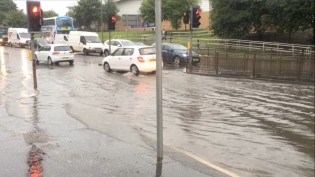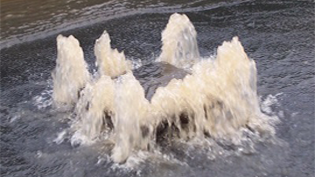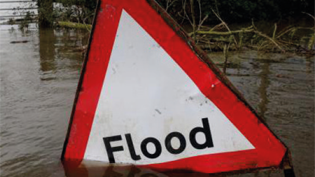Flooding & Scottish Water's Responsibilities
Scottish Water is responsible for:
- Operation of public foul and combined sewers and the public waste water network
- Managing problems caused by sewers either flooding or becoming restricted due to chokes or collapses
- Removing foul drainage and the drainage of rainwater from roofs and paved areas, from within the curtilage of premises, on connection to the public sewer
Local Authorities are responsible for:
- Producing Scotland’s first Local Flood Risk Management Plans
- Drainage of local roads and public highways
- Dealing with tidal and river flooding and flooding caused by severe rainfall
- Providing flood defences and maintaining watercourses
- Ensuring road gullies are operational
- Dealing with road closures in the event of flooding (except trunk roads)
- Co-ordinating reception centres for people evacuated from their homes and arrange temporary accommodation if appropriate
- Working with the police, fire and rescue services in response to severe flooding
The Scottish Government is responsible for:
- Drainage of motorway and major trunk roads, through its agency Transport Scotland. It is also responsible for making national policy on planning, flood prevention and flood warning. Find out more here.
Scottish Environment Protection Agency (SEPA) is responsible for:
- Providing flooding advice and flood warnings. These can be found on their website.
Climate change and population growth, together with the paving over of green spaces which provide natural drainage in our communities, are putting increasing pressure on our sewerage network. This is often made worse by people putting unsuitable products down the sink or toilet, increasing the risk of sewer flooding.
Many areas have separate sewers to take foul waste and rainwater, but most of our sewers are combined, meaning that foul sewage from kitchens and toilets mixes with rainfall. This means that, during a heavy storm, the flow in the sewer is much greater and can reach maximum capacity. During heavy rainfall storms the sewer system has been designed with a relief mechanism to safely relieve the pressure on the network. These relief mechanisms are known as Combined Sewer Overflows, or CSOs. See our CSO FAQs to find out more about how these work.
Our sewers are designed to cope with the vast majority of storms but occasionally rainfall can be so heavy that it overwhelms the system. When this happens, sewage can overflow from manholes and gullies and flood land and gardens. In the worst cases, sewage can even flood homes and cause pollution.
Sewer flooding is unacceptable and is treated with the highest priority. We prioritise our investment for potential flood alleviation schemes depending on the location, severity and frequency of sewer flooding. As a result, it is important that you report all sewer flooding so that we can keep our records up-to-date.
We're working with key partners to reduce the impact of flooding in Scotland. The responsibilities surrounding flooding are varied. A number of agencies are responsible for dealing with different aspects of flooding in Scotland.
Conventional urban drainage systems are made up of a complex network of sewer pipes, overflows, gullies, burns and culverts (covered watercourses). Ownership and duties are split between various agencies and landowners.









